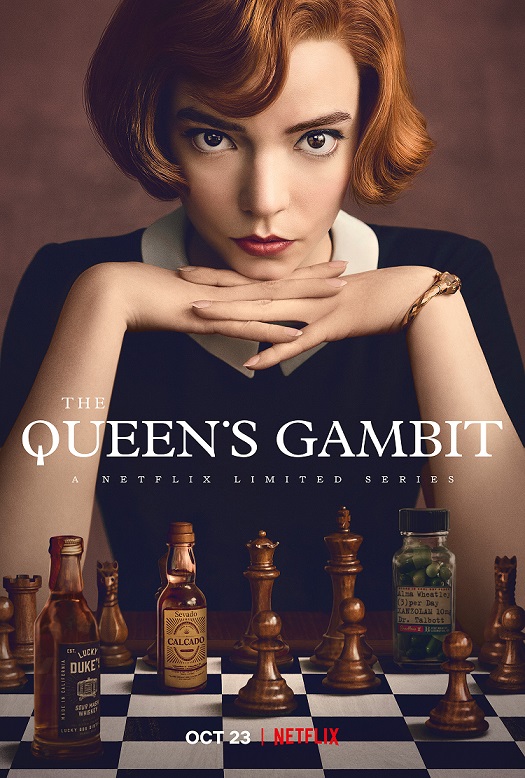The Queen’s Gambit brought to the table a spectrum of fresh colors and outlooks
Two facts about me that no one knows are that I cannot play chess and that I have vengeance towards limited series.
However, both these arbitrary pieces of knowledge were thrown out the door when Netflix released its newest original show, The Queen’s Gambit. This seven-episode series follows chess protegee Elizabeth Harmon (Anya Taylor-Joy) as she climbs the ranks from an orphaned child strategizing in a leaky basement to a well-respected player. Though this synopsis is rather dull, the show also displays Harmon’s addictive personality, melding her psychological fixation on chess with the tranquilizers and alcohol she often abuses. Additionally, the entire piece contains a particular tincture and charm.
When Beth is ripped from her boarding house and plopped into 1960s suburbia, a contrast in color that meanders throughout this show is built. From the deep mahogany and sage green that encircled her childhood, she is brought forth into a world of pastel blues and pinks. A constant shift occurs between these spectrums of color as the show progresses. This pigmentation is masked, however, by the abrasive white light that drips from this show. Though I am usually a fan of warmer lighting, I found this choice fitting towards the plot and especially towards Beth’s character.
Another quirk that I discovered after finishing the series was the costume design. From the late 1950s well into the 1960s, Beth’s character is seen transitioning from her plain orphanage uniform to looks studded with popular 60s trends. I much appreciated the re-usage of certain items multiple times throughout the season, such as Harmon’s checkered skirt. A cubic pattern comprises this item as well as many other articles in her closet. This design, strangely reminiscent of a chessboard, was a blatantly decisive move by the designers.
Though the perspective cast upon Beth’s early issues with pills was somewhat whimsical, she slowly progresses into an adult with fervent substance abuse problems. Wives and mothers during this time—in a blur of expectations pressed on them by society—were expected to care for the household. As a result of this immense anxiety, many of these women were prescribed tranquilizers to pacify their brains. We see Beth—a determined chess player on the hunt for greatness—suffer the pitfalls of these drugs not even meant for her demographic. This juxtaposition is apparent in how Harmon consumes the medication to tap into her chess skills while they were initially intended to subdue the mind. I had never seen addiction observed in this way, and I found this twisted take fascinating.
For every character being multifaceted, there was still a level of stereotype usage that I found awkward. Beth, who often treated the people around her with disrespect, was repeatedly offered support by those she had wronged. During one portion, the many acquaintances Beth had acquired came to her rescue WITH their assistance pushing her to victory. Though this felt like a last-ditch attempt to re-humanize her after one of her many relapses, it came off sort of outdated and predictable.
Yet overall, The Queen’s Gambit managed to combine diluted colors with complex narration and create a checkmate of a show that you absolutely must watch.

Jessie Warren is a senior, and this will be her second and final year as a staff member of The Central Trend. Ever eager to write, she finds a sort of...



























































































